Content from the Brookings-Tsinghua Public Policy Center is now archived. Since October 1, 2020, Brookings has maintained a limited partnership with Tsinghua University School of Public Policy and Management that is intended to facilitate jointly organized dialogues, meetings, and/or events.
Through its first six months, the Trump administration has concentrated on two issues in its relationship with China: North Korea and trade. While it has secured Chinese buy-in for a new diplomatic framework for dialogue, the administration does not appear to have settled on an overarching China strategy. So far, there have been no major speeches or articles by senior foreign affairs officials on China or Asia, with the partial exception of an address by Defense Secretary Mattis in Singapore on regional military issues.
Until a strategy is set, there will continue to be confused and conflicting messages from different quarters of the United States government on China, disagreement and sloppiness on proper sequencing of actions, and limits to our ability to elicit Chinese cooperation, as Beijing hesitates to commit to U.S. initiatives because of uncertainty over the steadfastness and coherence of U.S. policy.
In search of a strategy
The Trump administration has not presented a coherent public explanation of how it views China, what kind of relationship it seeks to cultivate, or how it plans to do so. To be fair, some senior administration officials have said they wish to see the U.S.-China relationship constructive and results-oriented, including by expanding cooperation, accepting healthy competition, and seeking to avoid confrontation. Secretary Tillerson, in particular, has spoken of the necessity to think forward 50 years about the type of relationship the United States should have with China, indicating that he understands the lessons of the trajectory of the last 50 years.
In the absence of an overarching strategy, Beijing is left to parse statements from senior U.S. officials for clues about Washington’s intentions toward China. The president has been all over the map—from suggesting that Taiwan could be used as leverage to saying he would consult with President Xi before engaging Taiwan’s leaders; from hailing his personal chemistry with President Xi to admonishing Beijing for doing “NOTHING” on North Korea; and from bashing China for stealing American jobs to exaggerating China’s modest concessions on market access. More recently, he has aroused alarm in Beijing over his intentions toward North Korea by raising the specter of military “fire and fury” along China’s border.
The impact of the president’s lurches has been compounded by the well-documented divergence among his senior advisors on China. Mattis, Tillerson, McMaster, Kelly, and Dunford have taken a relatively pragmatic approach, seeming to place value in stable relations and dialogue to solve problems. Mnuchin and Cohn have shown awareness of the risks of a trade war with China, and have served as moderating influences on economic issues. On the other hand, an influential group of the president’s advisors, including Ross, Lighthizer, Navarro, and Bannon, advocate a harder-edged response to Chinese challenges to U.S. primacy.
As a consequence of both the president’s frequently changing views and the variance in perspectives among his senior advisors, Washington does not appear to possess clarity on what type of relationship it seeks to build with China. This cognitive dissonance inhibits Washington’s ability to elicit Chinese support for steps to strengthen the relationship over the long run.
Despite these shortcomings, Trump has had one important asset that has served as an anchor, namely his personal relationship with Xi Jinping. The Mar-a-Lago meeting in March, concentrating on building personal bonds rather than resolving issues, was well-conceived and well-executed. Trump came out with a genuine high regard and respect for Xi, and Xi clearly values his personal relationship with Trump as well.
Their relationship is, ironically, unburdened by the values disputes that have poisoned Trump’s relationships with European allies. Even as members of his administration sometimes argue for harshly punitive measures against China, they are restrained by the Trump-Xi relationship and by the risk of a sharp reaction from the president if they misread his intentions. The Trump-Xi relationship has similarly restrained Chinese official responses to Trump administration statements and actions that normally would have elicited a strong response. Trump’s planned trip to China later this year offers an opportunity for the two sides to make substantial progress on North Korea or trade issues.
Solid process for managing relationship
On questions of process, the Trump administration deserves good marks. The administration was smart to separate and define clearly the scope of its four annual cabinet-level dialogues (diplomatic and security dialogue; comprehensive economic dialogue; law enforcement and cyber dialogue; and the social and cultural dialogue). Occurring at intervals over the course of the year, these high-level dialogues serve as a check against sustained deterioration in the relationship.
In terms of output from these dialogues, however, the record has been disappointing. Experience has shown that progress depends on clear identification of U.S. priorities and an agreed game plan for addressing Chinese priorities. Likewise, negotiators need to be empowered to set up the dialogues and follow-up persistently after talks conclude. On this count, the administration has been handicapped by its failure to nominate and confirm undersecretaries and assistant secretaries within key departments that normally would carry out such functions. The key working level officials at the State Department and National Security Council are capable and knowledgeable, but they need much more help.
On questions of process, the Trump administration deserves good marks…In terms of output from these dialogues, however, the record has been disappointing.
Narrow focus on top priorities
The Trump administration’s concentrated focus on North Korea and trade is a departure from the approach of the past administration, which deliberately grounded U.S.-China relations in a broad range of areas of cooperation, which served as guardrails to keep the relationship from veering off track.
With the affirmative agenda now narrowed to North Korea and trade, there is a greater demand to deliver results on these two preeminent issues. On North Korea, the Trump administration has been right to push China to do more. Through both intensive engagement and the credible threat of sanctions on Chinese companies, the administration secured some gains with China—implementation of a coal ban, support for stiffer sanctions at the United Nations, and increased scrutiny of Chinese commerce crossing the border with North Korea. The administration should continue to try to work with Beijing on North Korea, because there can be no serious progress in peacefully reining in North Korea’s nuclear and missile programs without China’s cooperation. While pushing the Chinese to do more, the administration needs to understand that Beijing’s leverage over Pyongyang is limited, and that attempting to farm out the North Korean problem to Beijing won’t deliver progress toward peaceful denuclearization, but it will generate needless friction in the U.S.-China relationship. Beijing’s willingness to work with the United States will depend on China’s trust that the administration knows what it is doing, that it is cognizant of China’s interests on the Korean Peninsula, that it is not aggravating the situation with incendiary rhetoric, and that it does not risk blundering into a planned or unplanned war. Some of the president’s recent comments give little confidence in this regard.
On trade, the administration’s attitude has shifted course several times. After heated rhetoric during the campaign (including pledges to name China a currency manipulator on day one, impose a 45 percent tariff on imports), initial interactions with the Chinese were positive. President Trump and President Xi held a summit at Mar-a-Lago and set up the Comprehensive Economic Dialogue (CED), styled after the approach of the last two American presidents. This process yielded an early harvest that administration officials hailed as major breakthroughs with China.
But the July CED meeting was a failure. Trump rejected the deal negotiated between his secretaries and the Chinese. This week, Trump directed the U.S. Trade Representative to study whether it should launch a Section 301 investigation into Chinese violations of intellectual property rights, especially as it relates to forced technology transfers. At the same time, an investigation is ongoing into whether steel imports pose a threat to national security. All of this leaves the Chinese side understandably confused: Are we continuing to negotiate small openings, which is all that China will accept at the moment (before this fall’s 19th Party Congress)? Or are we moving towards significant unilateral protectionist measures against Chinese imports and investment outside the framework of the World Trade Organization that invite China (and other countries) to do the same? The risk of a hardline approach is that China will not change anytime soon, but likely will feel compelled to retaliate, and tit-for-tat protectionist measures will hurt the U.S. and global economies.
Also unhelpful is the continuing focus on the trade balance as a metric of who wins and who loses from trade. The trade balance is equal to the difference between saving and investment and is influenced by many factors. If the Federal Reserve normalizes interest rates and Congress enacts deficit-increasing tax cuts, then it is very likely that the U.S. trade deficit will rise, regardless of what China does. Making the trade balance, rather than market access, the key issue is bad economics and sets the administration up for failure.
As the administration charts next steps with China, it should widen the aperture of its focus.
As the administration charts next steps with China, it should widen the aperture of its focus. In the past, the United States has convinced China to assume greater responsibility on issues ranging from climate change to peacekeeping and public health. China’s contributions have reduced the need for the United States to do more. Under U.S. pressure, China also moderated its behavior on issues such as cyber-enabled espionage for commercial gain.
Additionally, there are other issues that previous administrations have put near the top of the agenda, notably the South China Sea and human rights, which have gotten short shrift from the Trump team. There are reasonable arguments why neither should be at the top of the agenda. U.S. options in the South China Sea mostly involve military deployments, exercises, and freedom of navigation operations, which the administration has tried to regularize, as diplomatic options have become less attractive with the defection of the Philippines under President Duterte from solidarity on political and legal issues. But U.S. prestige and influence in Southeast Asia depend upon our visible involvement and leadership on South China Sea issues, so there will have to be a diplomatic component supplementing the work of Pacific Command. As for human rights, Trump has a valid point in contending that the United States needs to balance its concerns with other issues not only in China but throughout the world. But if Washington is seen as indifferent to human rights after decades of championing the cause, the damage to the perception of our country, not least among ordinary people in China, will be substantial.
Loss of leverage
The U.S. ability to leverage its greater national power in its relationship with China has for a long time been less than many commentators believe, but it certainly has diminished now. Trump is playing cards with a weaker hand, some of it the result of secular trends but some of it self-induced.
The withdrawal from the Trans-Pacific Partnership has dealt a blow to U.S. economic and commercial influence in East Asia, at a time when China’s economic influence is expanding. The administration’s disdain for the international system and multilateral institutions and norms has created dismay among Asian countries that count on these norms to provide barriers to Chinese bullying. Indeed, the only multilateral economic games in town are now China-centered, namely the Asian Infrastructure Investment Bank, the Regional Comprehensive Economic Partnership negotiations, and the “One Belt, One Road” initiative, and almost all Asian countries participate in each. Our key regional allies, anxious about Chinese military expansion, have been shaken by presidential remarks indicating a mercenary and transactional approach to defense obligations. The attitude of “America First,” and the public debate in the United States over the North Korea nuclear problem that obsesses over the threat to the U.S. mainland while ignoring the clear and present danger to allies on North Korea’s doorstep, has revived long-dormant debates in the region about U.S. reliability in the face of China.
So even while we look at the U.S.-China bilateral relationship for signs of stability or strain, we cannot forget that the relationship does not occur in a vacuum. The relationship should be embedded in a larger set of stable U.S. political, security, and economic ties. That means more than the occasional bilateral visit or meeting, valuable as those may be. It will require a greater commitment to the region, of strategic thinking, time, resources, and energy than we have seen so far.
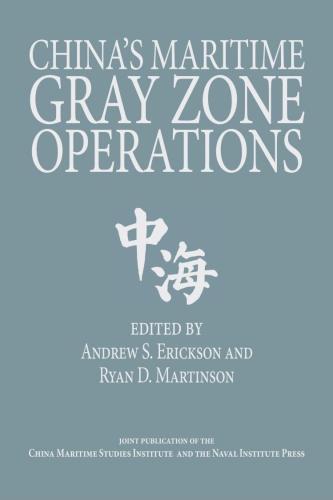

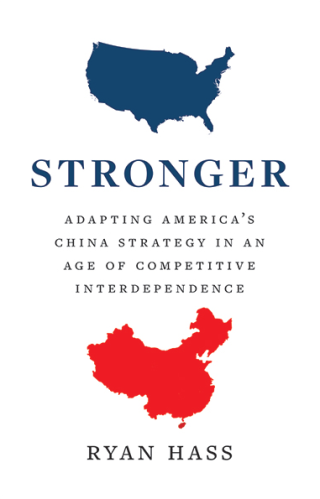
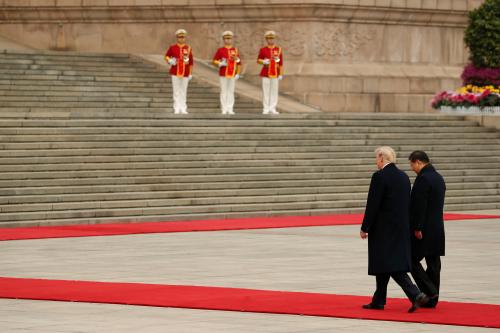
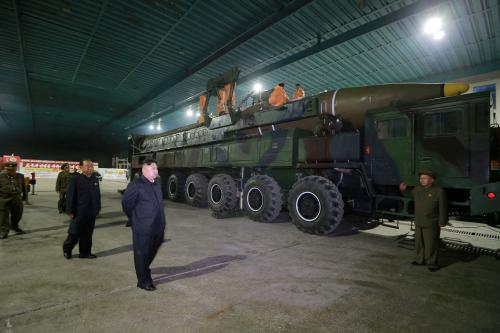
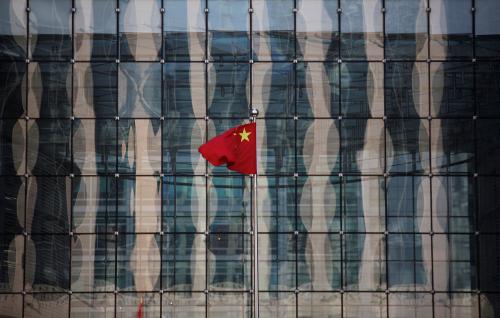






Commentary
U.S.-China relations, 6 months into the Trump presidency
Still in search of a strategy
August 14, 2017